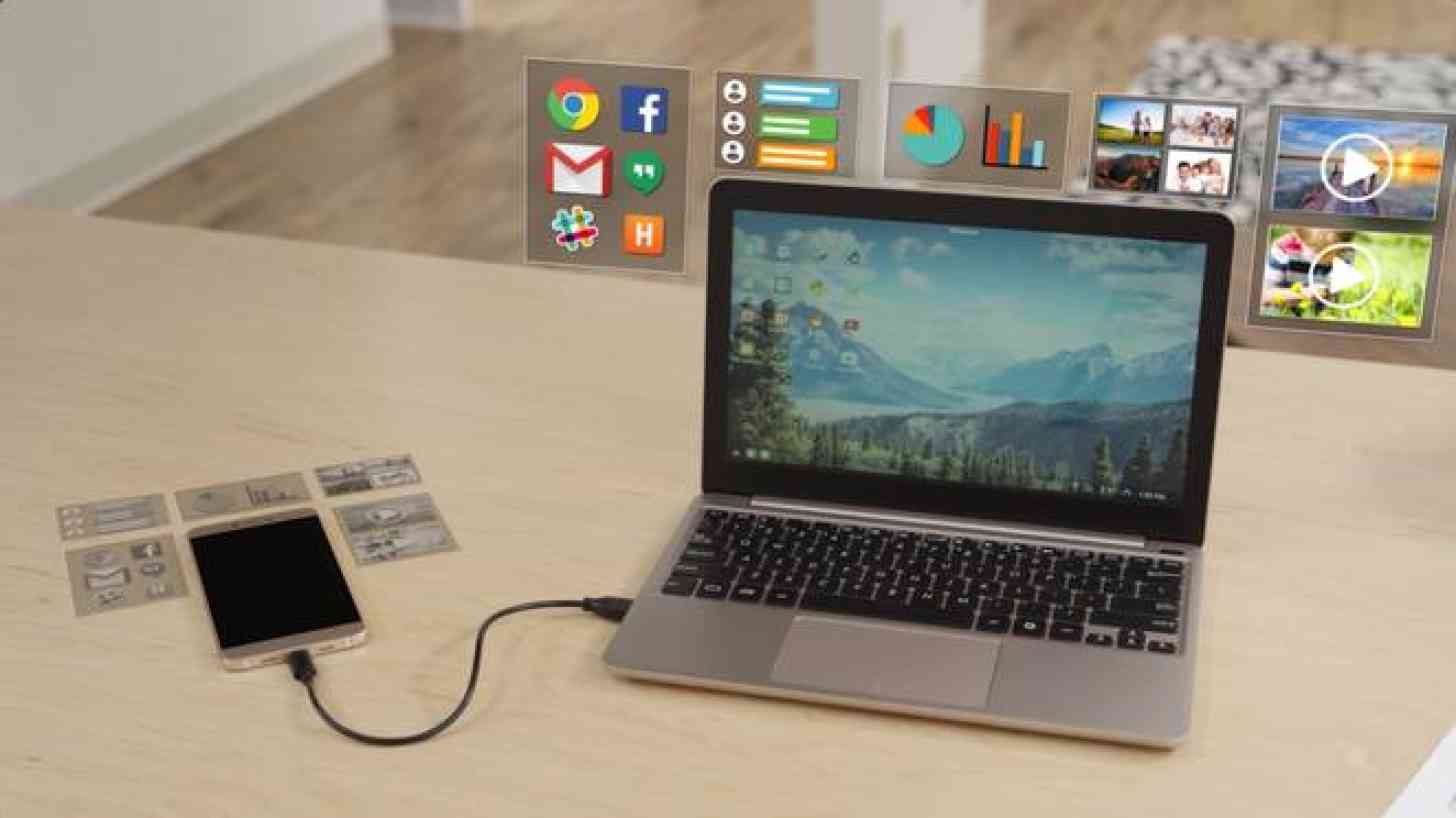
It’s commonly understood that our smartphones are much more than just phones. No longer is the primary function for the phone to be, well, a phone. It almost seems like there is no singular primary function of smartphones. We all use our smartphones for so many different reasons, whether it’s to take and share photos and videos, to connect via social media, to browse the web, to text and e-mail, to make actual phone calls, to watch movies and TV, to manage files, to play games… the list goes on. The bottom line is that smartphones, for many people, are completely capable of serving as a replacement for a lot of things in our lives, including computers.
But while using your smartphone for something that you might typically use a computer for is convenient, it’s hard to argue that using your smartphone as a computer replacement is always easier. For instance, typing out long e-mails can be a challenge sometimes, especially when it comes to editing. While copying, pasting, and trying to edit typos is certainly possible, I wouldn’t say that it’s necessarily easier using your finger than using a traditional mouse and keyboard. The same could be said for operating programs like Microsoft Office, Google Drive, or other productivity apps. You can use them on your phone, but it’s just not as easy to get things done. At least, that has been my experience.
Sometimes I start to write my articles on my phone. It’s convenient for when I have an idea and I want to get started right away, but can’t get to my computer. But when it comes time to review what I’ve written and editing, I usually make my way to my computer to finish the document – which isn’t a big deal thanks to cloud storage.
But one way to make things easier, especially in the case that I won’t be near my computer for a while, is to be able to dock my smartphone to a computer shell; that is, to use my smartphone as my computer, but connect it to something that looks and functions like a laptop.

It’s not a concept that’s unheard of; the idea of using smartphones as full-fledged computers has been around for some time. I remember constantly tinkering with the Motorola Photon "laptop" that was on display when I worked at Sprint 5 years ago. It was laggy and didn’t translate very well to being a functional computer. It was also expensive at almost $300, and just wasn’t worth it for most people. However, it was fascinating and a cool concept.
In 2014, a company named Andromium released a nearly identical solution for a wider selection of phones called the Andromium Dock. You supply the phone, monitor, keyboard, etc., and their dock will turn that powerful piece of technology into a computer. But again, the inconvenience of supplying several components aside from your phone made purchasing a normal laptop a more convenient option. It also only worked with a select few phones.
But Andromium is back, and this time with a much better solution: the Superbook.

For $99, you get everything you need (except for the phone). You get a monitor, a keyboard, and a touchpad mouse – essentially a laptop with no internal components - and a connection cord. Your Android phone serves as the brains. The best part is that this solution works with every Android phone running Android 5.0 or higher, has at least 1.5GB of RAM, a dual-core processor, at least 25MB of free storage, and supports USB-OTG. That's a lot of Android phones that work with the Superbook. It’s future-proof, too, which means that when you upgrade, your Superbook “upgrades” too.
The Superbook features an 11.6-inch HD display, 8+ hours of battery life, multi-touch trackpad, keyboard, and the ability to use your phone’s data, Wi-Fi, and Bluetooth connections. The Superbook also simultaneously charges your phone while it’s connected.
For $99, it seems like an amazing deal. It also surfaces at an interesting time seeing as Chromebooks are now rolling out with support for Android apps, which I think has comparable functionality. But even as cheap as Chromebooks come, most aren’t as cheap as $99 – and aren’t as powerful as many flagship Android smartphones are, either.
It’s still in early Kickstarter phase, so it’ll be a while before Superbooks actually start shipping out. But already they’ve surpassed their goal over five times, so things are looking pretty good on the Superbook front.
Readers, what do you think of the Superbook? Is this a device that you would be interested in using? Let us know your thoughts in the comments below!